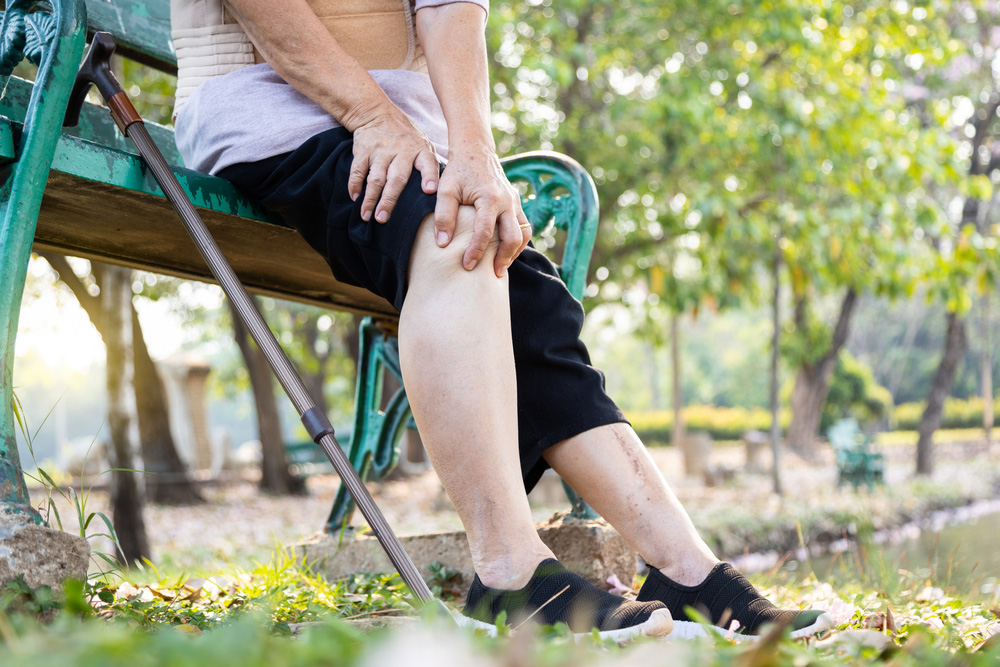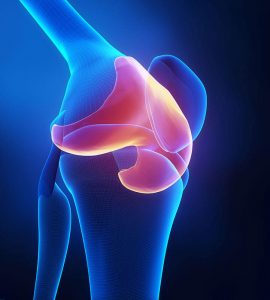
Knee Arthritis: Common Yet Treatable
Knee arthritis is a common condition that causes pain, swelling, and stiffness in the knee joint, making everyday activities increasingly difficult. It can affect people of all ages but is most commonly seen in those over 50. Whether caused by wear-and-tear or an underlying condition, arthritis of the knee can significantly reduce your quality of life if left untreated.
At Quantum Orthopaedics, we specialise in the diagnosis and treatment of knee arthritis in Singapore, offering a range of evidence-based, personalised solutions — from conservative therapies to advanced surgical procedures — to help you manage pain and regain your mobility.
What is Knee Arthritis?
Knee arthritis refers to the inflammation and degeneration of the knee joint, typically involving the breakdown of cartilage — the smooth, cushioning surface that helps the bones glide easily during movement.
Without enough cartilage, bones begin to rub against each other, leading to pain, inflammation, and stiffness. In more advanced cases, bone spurs (osteophytes) may form, and the joint may become deformed or unstable.
Contact us at 8028 4572 for a detailed evaluation and diagnosis
of your knee pain today.
Common Symptoms of Knee Arthritis
Symptoms may start off mild and worsen over time. They can include:
- Knee pain during or after movement
- Morning stiffness or stiffness after prolonged rest
- Swelling around the knee joint
- Grinding or clicking sensation during movement
- Limited range of motion
- Difficulty climbing stairs or standing from a seated position
- Knee instability or buckling
If symptoms persist or worsen, it’s important to seek medical attention for proper evaluation and treatment.
Types of Knee Arthritis
Knee arthritis isn’t a one-size-fits-all condition. It can develop from different causes and present in varying forms depending on the underlying issue. Below are the four most common types of arthritis that affect the knee joint — each with its own unique characteristics, progression, and treatment needs.
1. Osteoarthritis (OA)
The most common form of arthritis in the knee
Overview:
Osteoarthritis is a degenerative joint disease characterised by the progressive breakdown of articular cartilage — the smooth, cushioning tissue that covers the ends of bones in the knee. As this cartilage wears away, bones begin to rub against each other, leading to pain, stiffness, and inflammation.
Causes:
- Natural ageing and wear-and-tear over time
- Previous injuries (e.g. fractures, ligament tears)
- Obesity, which increases stress on the knee
- Joint misalignment (bow-legged or knock-kneed)
- Family history of osteoarthritis
Symptoms:
- Gradual onset of knee pain that worsens with activity and improves with rest
- Morning stiffness that usually lasts less than 30 minutes
- Swelling, especially after long periods of movement
- Reduced range of motion or difficulty bending/straightening the knee
- A grinding or clicking sensation (crepitus) during movement
- Visible changes in joint shape in advanced stages
Progression:
Osteoarthritis is typically slow and progressive, starting with occasional discomfort and evolving into chronic pain and functional limitations. In advanced cases, the joint may become significantly deformed or unstable.
2. Rheumatoid Arthritis (RA)
An autoimmune condition that can affect both knees symmetrically
Overview:
Rheumatoid arthritis is a chronic inflammatory autoimmune disease where the body’s immune system mistakenly attacks the synovium — the lining of the joint capsule. This leads to inflammation, joint erosion, and eventual cartilage and bone destruction.
Causes:
- Autoimmune dysfunction
- Genetic predisposition (family history of RA)
- Environmental triggers (e.g., infections or smoking)
- More common in women and typically begins between ages 30–60
Symptoms:
- Persistent swelling and pain in the knee(s)
- Morning stiffness lasting longer than one hour
- Symmetrical joint involvement (both knees affected equally)
- General fatigue, low-grade fever, or weight loss
- Warmth and redness around the joint
- Difficulty performing daily tasks due to joint discomfort
Progression:
RA can be episodic (flare-ups and remissions) or progressive, causing continuous damage over time. If not treated early and effectively, it can lead to severe joint deformity and disability.
3. Post-Traumatic Arthritis
A form of secondary osteoarthritis caused by prior injury
Overview:
Post-traumatic arthritis develops after a direct injury to the knee joint, such as a fracture, ligament tear, or meniscus injury. Damage from the initial trauma can alter the biomechanics of the knee and accelerate cartilage wear, leading to early-onset arthritis — sometimes within a few years of the injury.
Causes:
- Knee fractures involving the joint surface
- Ligament injuries (e.g., ACL or PCL tears) that disrupt joint stability
- Meniscal tears or removal (meniscectomy)
- Repetitive strain from sports or physical labour
- Improper healing after surgery or injury
Symptoms:
- Persistent or recurring pain after past knee trauma
- Swelling after activity or prolonged standing
- Joint instability or a sense of “giving way”
- Decreased range of motion or stiffness
- Pain that worsens with weather changes
Progression:
This type of arthritis often appears earlier than age-related OA and may progress more quickly if underlying mechanical imbalances are not addressed. It tends to affect one knee — usually the injured one — and can become increasingly symptomatic over time.
4. Gout and Pseudogout
Sudden, severe joint inflammation caused by crystal deposits
Overview:
Gout and pseudogout are forms of inflammatory arthritis caused by the deposition of microscopic crystals within the knee joint, leading to sudden, painful flare-ups. While these are not degenerative like OA, repeated attacks can cause lasting joint damage over time.
Gout:
- Caused by uric acid crystals
- Often triggered by diet, dehydration, or certain medications
- More common in men and people with metabolic conditions (e.g., obesity, hypertension, kidney disease)
Pseudogout:
- Caused by calcium pyrophosphate crystals
- Typically affects older adults
- Can occur spontaneously or following surgery or trauma
Symptoms (for both):
- Sudden and intense pain in the knee (often overnight)
- Swelling, redness, and warmth over the joint
- Limited ability to move or bear weight on the leg
- Symptoms may resolve in a few days but can recur unpredictably
Progression:
While acute attacks are temporary, repeated or poorly managed flare-ups can lead to chronic joint damage, especially in gout. Long-term inflammation can mimic or coexist with osteoarthritis.
If you’re experiencing persistent knee pain, stiffness, or
difficulty walking, don’t ignore it.
Early intervention can make a lasting difference. Contact our knee arthritis clinic today.
How is Knee Arthritis Diagnosed?
At Quantum Orthopaedics, your assessment involves a comprehensive clinical evaluation:
- Physical Examination – Checking your knee’s range of motion, stability, tenderness, and strength
- Imaging – X-rays to assess joint space narrowing, bone spurs, or deformity; MRI if soft tissue structures need closer examination
- Medical History – Including previous injuries, family history of arthritis, and your activity level
This allows us to accurately determine the type and severity of arthritis and recommend an appropriate treatment plan.
Frequently Asked Questions (FAQs)
1. Can knee arthritis be cured?
Knee arthritis cannot be reversed, but its symptoms can be managed effectively. Early treatment can slow its progression and delay or prevent the need for surgery.
2. When should I consider knee replacement?
Knee replacement is typically recommended when pain severely limits daily activities, conservative treatments fail, and imaging shows advanced joint damage.
3. Is walking good for knee arthritis?
Yes, low-impact walking can help keep the joints flexible and strengthen muscles around the knee — but it should be done within a pain-free range.
4. How long does a knee replacement last?
Modern knee implants can last 15 to 20 years or longer, depending on your activity level and how well you care for your joint.
5. Are injections safe for treating arthritis?
Yes. Injections like corticosteroids, hyaluronic acid, and PRP are safe when administered by trained specialists and can provide significant symptom relief.




